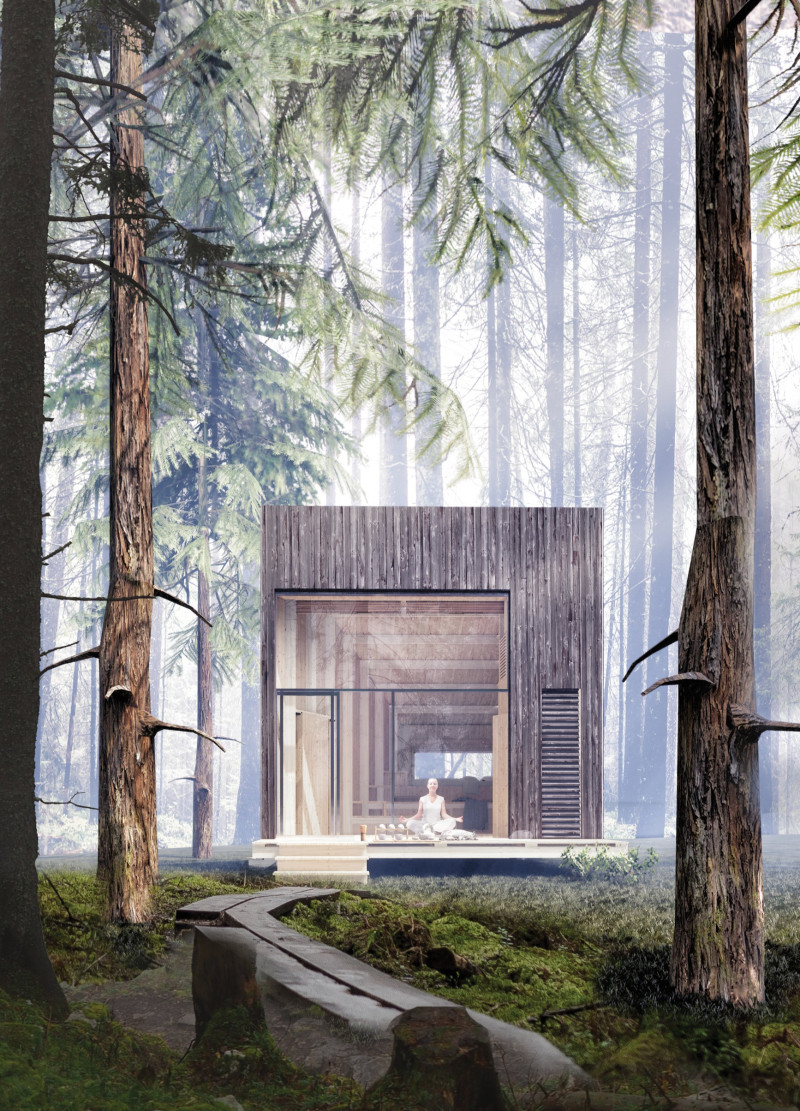5 key facts about this project
The silent meditation cabin is located in the serene landscapes of Latvia. It serves as a retreat for those seeking a peaceful space for reflection and connection to nature. The design is influenced by traditional Latvian architecture and emphasizes mindfulness. The cabin features a distinct right trapezium shape that enhances the natural sounds of the environment, inviting calm into daily life.
Design Concept
The form of the cabin acts like an amplifier, enriching the quiet sounds of chirping birds and rustling leaves. This thoughtful design allows users to engage more deeply with their thoughts and surroundings. It not only serves as a sheltered space but also enhances the experience of meditation and introspection through a strong connection to nature.
Spatial Organization
Inside the cabin, spaces are clearly organized from public to private areas. When entering, visitors find themselves in the main meditation area, which has large windows that provide beautiful views of the landscape. The interior is designed for flexibility, allowing activities like meditation, reading, and tea-making, making it welcoming and functional.
Materiality
The construction of the cabin uses prefabricated modules, efficiently assembled on-site and supported by four concrete piers for stability. The exterior features a pine frame that remains exposed on the inside, connecting to the natural setting. The interior includes light-colored plywood, creating a warm atmosphere, while natural pine-wood panels add insulation to keep the space comfortable throughout the year.
Functional Elements
The layout of the cabin is compact yet effective, organizing necessary facilities like a bathroom, kitchen, study area, and wardrobe into a 'thick wall' along one edge. A wood-burning fireplace and a small stove for making tea enhance the usability of the space. Additional options, such as sliding doors and operable windows with mosquito screens, promote an ongoing relationship between the cabin and its natural surroundings.
One particularly noteworthy detail is the optional rainwater collection system. This feature gathers water from the roof and stores it beneath the sleeping area, supporting sustainability while fostering a sense of self-reliance in the midst of nature.



























